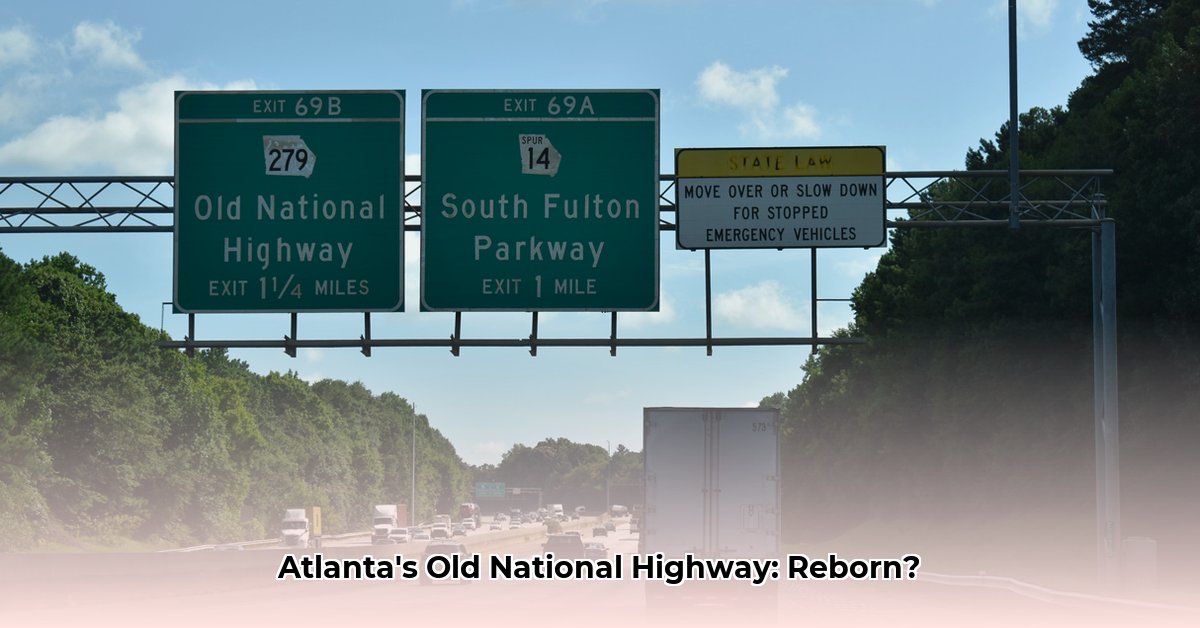The Old National Highway, a historic thoroughfare winding through South Fulton and College Park, Georgia, is on the cusp of a dramatic transformation. Once a symbol of decline, this vital artery is being reimagined as a vibrant, mixed-use hub, breathing new life into the surrounding communities. This revitalization is not merely cosmetic; it’s a comprehensive overhaul designed to address deep-rooted challenges and unlock the corridor’s untapped potential. For more information on Georgia development projects, check out this Georgia platform.
A Multifaceted Approach to Revitalization
The revitalization plan is ambitious in scope, encompassing nearly 700 acres and impacting every facet of community life. This multifaceted strategy tackles the corridor’s complex issues head-on, paving the way for a more prosperous and equitable future.
Infrastructure Investments: Recognizing that a strong foundation is essential for growth, the plan prioritizes critical infrastructure upgrades. These include modernizing roads, enhancing utilities, and expanding public transportation options. Improved accessibility and connectivity will not only facilitate smoother traffic flow but also attract businesses and residents, creating a more dynamic and functional environment. Specifically, improvements at the intersection of I-285 and Old National Highway, reportedly the second busiest intersection in metro Atlanta, will significantly alleviate congestion and improve regional access.
Housing Diversity: Central to the revitalization is the creation of diverse housing options that cater to a range of incomes and lifestyles. This inclusive approach aims to prevent displacement and ensure that the benefits of revitalization are shared by all residents. From single-family homes to multi-unit developments, the plan incorporates a mix of housing types to create a balanced and thriving community. This strategy addresses a critical need for affordable housing in the area while also providing opportunities for new homeowners.
Economic Empowerment: The revitalization seeks to stimulate economic growth by attracting businesses that create jobs and contribute to the local economy. Specifically, the plan incorporates strategically designed commercial spaces, including the Old National Marketplace, a 34-acre site envisioned to host a diverse mix of businesses, from hotels to restaurants. This focus on commercial development will not only generate employment opportunities but also foster a vibrant, walkable environment where residents can live, work, and play. Targeted developments, such as a potential sports complex and entertainment venues near the intersection of Old National Highway and Jonesboro Road, aim to draw visitors and further boost economic activity.
Community Partnership: The success of this revitalization hinges on active community participation. The plan emphasizes ongoing engagement with residents, business owners, and city officials, ensuring that the project reflects the community’s needs and aspirations. This collaborative approach fosters trust and transparency, creating a shared vision for the corridor’s future. Public forums, workshops, and ongoing communication channels ensure that all voices are heard and that feedback is incorporated into the planning process.
Navigating the Path to Progress
While the potential rewards of revitalization are significant, the journey is not without its challenges. Addressing these obstacles requires careful planning, resourcefulness, and a commitment to long-term sustainability.
Securing Sustainable Funding: Funding a project of this magnitude demands strategic financial planning. The revitalization relies on a combination of public and private investment, requiring careful budgeting and the exploration of innovative financing solutions. Securing long-term funding is essential to ensure the project’s completion and ongoing maintenance.
Maintaining Open Communication: Transparent communication and ongoing dialogue with the community are crucial for maintaining trust and addressing concerns. Regular updates, community meetings, and accessible information channels will keep residents informed about the project’s progress and allow for continuous feedback. This open communication fosters a sense of ownership and shared responsibility for the revitalization’s success.
Mitigating Potential Risks: Large-scale projects inherently face risks, including potential cost overruns, unforeseen delays, and community resistance. A proactive risk management strategy is essential for anticipating and mitigating these challenges. This includes careful cost analysis, contingency planning, and ongoing communication with stakeholders to address potential roadblocks.
A Vision for the Future
The Old National Highway revitalization represents a bold vision for the future. It’s a testament to the community’s resilience, its commitment to progress, and its belief in the power of collaboration. This transformative project promises a revitalized corridor, a strengthened community, and a brighter future for generations to come. The anticipated five-year timeline for completion marks a significant step towards realizing this vision, ushering in an era of renewed prosperity and opportunity for South Fulton and College Park.
- Jesus Bible: Discover Jesus’s Story Throughout Scripture - April 27, 2025
- Don Luis: Unraveling the 16th-Century Virginia Mystery - April 27, 2025
- Captain J’s Kauai Tours: Unforgettable Na Pali Coast Adventures - April 27, 2025
















